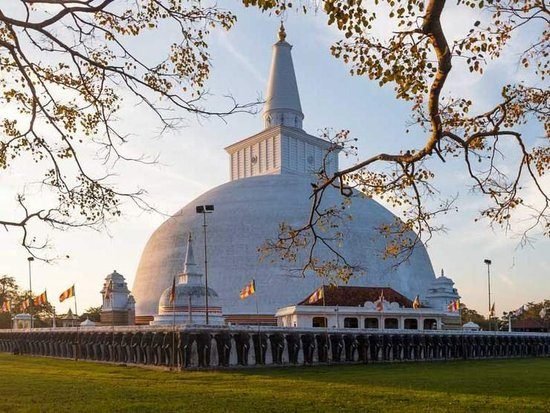Sri Lanka is not merely a country—it is a civilization, alive with the breath of ancient chants, quiet temples, and the unbroken rhythm of the Dhamma. For the Sinhala Buddhist people, this land is not only home—it is sacred ground. It holds within it a lineage that reaches back over two thousand years, nurtured through faith, rebuilt through sorrow, and protected not by conquest, but by conscience.
Through invasions, colonization, and conflict, Sinhala Buddhists have endured. They did not sail across oceans to convert others. They did not raise weapons to force belief. They stayed here—rooted. They worshipped, they rebuilt, they remembered. That is not weakness. It is a form of strength the modern world seldom recognizes: patience that does not waver, identity that does not ask for permission.
There are those who look from afar and misunderstand. Global narratives, often shaped by former empires or ideologies, frame Sri Lanka unfairly—forgetting their own pasts of colonization, erasure, and war. Sinhala Buddhists have never asked others to bow to their beliefs. They have only ever asked one thing: let us protect what was passed to us, untouched and undiminished. In a world that constantly reinvents itself, theirs is a rare identity that seeks remembrance, not reinvention.
History offers echoes. King Dutugemunu, perhaps Sri Lanka’s most renowned ruler, fought to unify the land not in arrogance, but with purpose—to restore the Sasana. After defeating his rival, he built a monument in his honor. That is the moral architecture of this civilization. Gajabahu I, crossing into India to free captives; Vijayabahu I resisting foreign domination with wisdom and strategy; Parakramabahu I rebuilding what was broken with grace and intellect—these kings remind us that protection and justice do not require hatred.
When the island was torn by modern conflict, and Sinhala villagers fell to LTTE attacks, their grief did not become rage. Temples continued to chant. Children still learned the Dhamma. Shrines, once destroyed, were built again. It was a continuation of the same ancient vow: do not surrender the Sasana. Not through fear. Not through violence. But through memory and practice.
That vow is often misread. People confuse dignity with pride. They mistake spiritual resilience for extremism. But the truth is clear for those willing to see. The Sinhala Buddhist community has never conquered—only guarded. They do not need to silence others to find strength. Their silence is strength.
They are different, not because they are better, but because they are faithful—to their ancestors, to their beliefs, to their land. And as new generations take their place beneath the same Bodhi trees, the vow remains unchanged.
To live in harmony—but never in surrender.
By Palitha Ariyarathna Ceo and Founder, Ceylonwatch Analyst of Buddhist Affairs Desha Abhimani Surya Vansa Ratna Vibhushan Senkadagala Sinha Dwaraya President, Jathika Bawuddha Balwegaya Founder, Sinhala Prathipatthi Kendraya TCFBI PEC President – Unethical Conversion of Buddhist TCFBI International Coordinator Secretary, Hela Abimani National Foundation Author, Publisher, and Journalist

